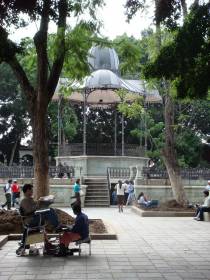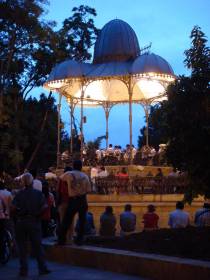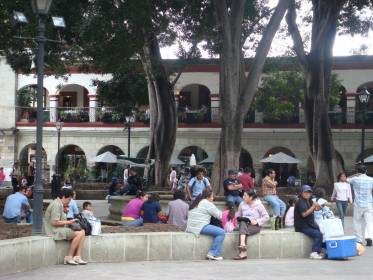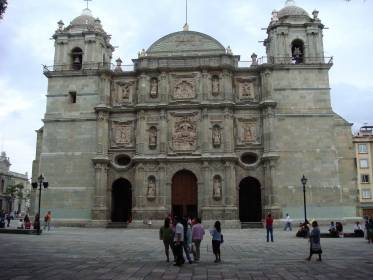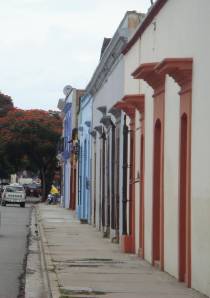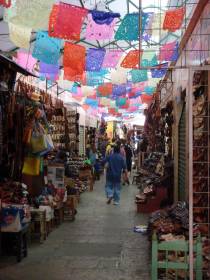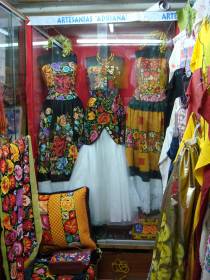Puebla - Oaxaca (Thursday 30/08/07)
Oaxaca
Capital of the state, Oaxaca retains an air of provincial despite having about 600,000 inhabitants.
The natives of this region are descendants of pre-Hispanic groups Zapolechi and Mixtec, who were the source of one of the most important pre-Columbian civilizations.
The craftsmanship of this region, which is a true cultural mosaic, is exceptional: the black porcelain, carpets in wools and jewelry to name a few, have given many villages an international reputation.
The zocalo is its glittering mirrors: spectular square, with flower beds and flowering trees, busy until late at night, beneath its porches (portales), cafes and restaurants.
In the sides there are the most important palaces.
To the south, the Palcio del Gobierno, dating to the early twentieth century, with a mural by Arturo Garcia Bustos on the steps that illustrate the history of the city.
To the north, the Cathedral, built from 1553 and ended in the seventeenth century, with elegant baroque decorations on the main facade which fronts the Alameda.
Northbound run the most characteristic Oaxaca streets, all perpendicular to each other, with the most significant churches and palaces, fully restored.
By day the whole city gravitates around the large Central de Abastos, the market for supplies. Mysterious herbs, love potions, sarapes, colorful ponchos, embroidered costumes and chapulines, crickets fried and crunchy.



